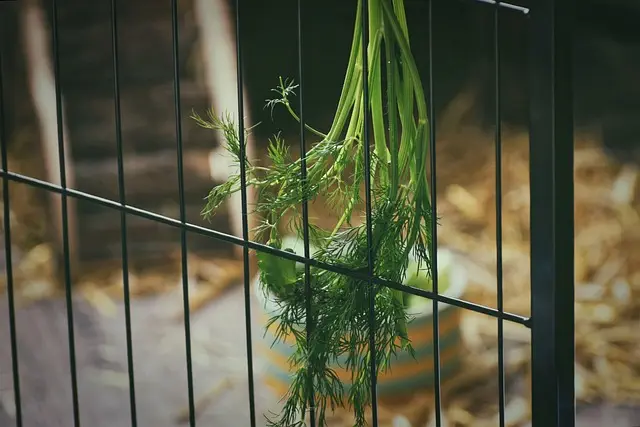Chelsea's experience with CBD Kratom has provided valuable insights into their potential as therapeutic options for addiction treatment. Initially skeptical, she observed positive effects on withdrawal symptoms and cravings, suggesting that these compounds could be beneficial additions to a recovery program. CBD, known for its non-psychoactive benefits and pain-relieving properties, paired with kratom's traditional use in Southeast Asia for managing pain and mood regulation, showed promising synergistic effects in Chelsea's case. Her narrative advocates for further scientific exploration into the efficacy of CBD Kratom in this realm, highlighting the importance of diverse treatment approaches. Medical professionals are encouraged to consider these natural substances within a broader treatment strategy, as evidenced by Chelsea's significant improvements in mental health and well-being when integrating them into her recovery plan, which included therapy, exercise, and nutritious eating. Chelsea's holistic approach using CBD Kratom chelsea underscores the need for personalized care and the potential of these substances as complementary therapies in addiction recovery. Her journey exemplifies how a tailored recovery strategy can effectively address both the physical and mental aspects of substance use disorders, offering hope to those seeking alternatives to traditional treatments.
Exploring the transformative role of CBD Kratom in addiction treatment and recovery, this article presents a compelling narrative from Chelsea’s journey. Delving into the therapeutic potential of these substances, we examine how they have been pivotal in Chelsea’s path to wellness. From understanding their properties to integrating them into a comprehensive recovery plan, this piece offers insights that underscore their value in addiction treatment. Join us as we navigate the nuances of CBD Kratom and their impact on recovery, drawing inspiration from Chelsea’s experience to illuminate the possibilities for others seeking a new lease on life.
- Unraveling the Potential of CBD and Kratom in Addiction Treatment: A Closer Look at Chelsea's Experience
- Exploring the Therapeutic Properties of Kratom for Recovery: Insights from Chelsea's Journey with CBD Kratom
- Integrating Kratom into a Holistic Addiction Recovery Plan: Lessons Learned from Chelsea's Ongoing Path to Wellness
Unraveling the Potential of CBD and Kratom in Addiction Treatment: A Closer Look at Chelsea's Experience

Chelsea’s journey with addiction treatment led her to explore alternative therapeutic options, including the use of CBD and kratom. Initial skepticism about the efficacy of such compounds gave way to cautious optimism as she began integrating these substances into her recovery regimen. Chelsea’s experience highlights a growing body of anecdotal evidence suggesting that both CBD and kratom may play roles in mitigating withdrawal symptoms and reducing cravings associated with substance abuse. CBD, or cannabidiol, is well-known for its therapeutic properties, including its potential to alleviate anxiety and pain without the psychoactive effects of THC, found in cannabis. Kratom, a plant-based substance derived from the leaves of the Mitragyna speciosa tree, has been traditionally used in Southeast Asia for its stimulating and sedative effects. In Chelsea’s case, the synergistic potential of these compounds appeared to offer a supportive framework during her recovery process. She reported a noticeable decrease in the intensity of withdrawal symptoms, attributing this to the anti-inflammatory and analgesic properties of CBD, combined with kratom’s mood-stabilizing and pain-relieving effects. Her story underscores the importance of exploring a variety of treatment options for addiction, including those that are plant-based and have shown promise in preliminary studies. It is crucial for ongoing research to substantiate these findings and for medical professionals to consider these substances as part of a holistic treatment plan for those battling addiction.
Exploring the Therapeutic Properties of Kratom for Recovery: Insights from Chelsea's Journey with CBD Kratom

Chelsea’s journey with CBD Kratom has shed light on the potential therapeutic properties of this natural substance in the context of recovery from addiction. Initially skeptical yet hopeful, Chelsea turned to CBD Kratom as a non-traditional aid in her quest for sobriety. She found that the plant’s alkaloids, mitragynine and 7-hydroxymitragynine, interacted with her body in a unique way, providing relief from withdrawal symptoms and cravings without the high or side effects associated with other treatments. Over time, Chelsea observed a reduction in anxiety and an improvement in her overall sense of well-being. This experience is indicative of Kratom’s ability to modulate mood and alleviate discomfort, which are crucial components in maintaining recovery.
As part of her holistic approach to addiction treatment, Chelsea incorporated CBD Kratom into a structured regimen that included therapy, exercise, and a balanced diet. The effects were multifaceted; not only did the Kratom mitigate acute symptoms, but it also seemed to contribute to a gradual normalization of her neurochemistry. This, combined with the absence of psychoactive elements found in traditional Kratom, made CBD Kratom a compelling option for those seeking an alternative to pharmaceutical interventions. Chelsea’s narrative underscores the importance of personalized recovery strategies and the potential for CBD Kratom as a complementary treatment option in addiction recovery. Her story serves as a beacon of hope for others navigating the complex path to recovery.
Integrating Kratom into a Holistic Addiction Recovery Plan: Lessons Learned from Chelsea's Ongoing Path to Wellness

Integrating Kratom into a comprehensive addiction recovery plan can be a nuanced approach, particularly when considering an individual’s unique journey to wellness. Chelsea’s ongoing path to recovery serves as an informative case study in this context. The synergistic effects of combining Kratom with CBD have shown promising results in Chelsea’s experience. Kratom, a plant-based substance, interacts with the body’s opioid receptors and has been traditionally used to alleviate pain and manage withdrawal symptoms. When paired with CBD, another natural compound known for its therapeutic properties, the two substances may complement each other effectively. Chelsea’s recovery process highlights the importance of a tailored approach that respects individual responses to treatment. The holistic plan she follows includes medical supervision, counseling sessions, lifestyle modifications, and the judicious use of Kratom and CBD. This multifaceted strategy underscores the value of a personalized treatment regimen that addresses both the physical and psychological aspects of addiction. It’s clear from Chelsea’s story that such an integrative approach can be instrumental in navigating the complexities of addiction recovery, offering a potential pathway to sustained wellness for those who have found traditional methods lacking.
In conclusion, the exploration of Chelsea’s experience with CBD Kratom has provided valuable insights into the potential benefits of these substances in addiction treatment and recovery. The examination of their therapeutic properties within a holistic plan has underscored the importance of individualized approaches to wellness. While further research is necessary to fully understand the efficacy and safety profile of CBD Kratom in this context, Chelsea’s journey serves as an encouraging narrative for those seeking alternative pathways to recovery. It is clear that such treatments may complement other forms of care, offering hope to many affected by addiction. As we continue to investigate the science behind these compounds, personal stories like Chelsea’s highlight the promise they hold in the realm of substance abuse treatment.






